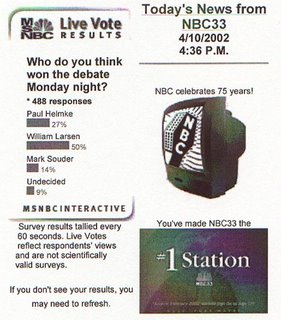Healthcare - Who pays the bill?
Who pays for healthcare in the U.S.? Let us break this question down into groups; Medicare, Medicaid, individuals. We can further break down individuals into company insured, private insured and uninsured. Have we left anyone out?
Medicaid is pretty simple and direct. Medicaid pays healthcare for the poor who cannot afford to pay for it themselves. This means the taxpayers pay for this program through State and Federal income taxes.
Medicare is a bit more tricky in that it is funded 50% from the Medicare Payroll Tax of 2.9% paid by employees and employers.
Company sponsored health insurance is a benefit that is built into the cost structure of the company’s products and or services. Ultimately the consumer pays this. The portion the company does not cover is covered by the employee who may have deductible, co-pay or some agreed upon percentage of the bill.
Private insurance is paid by individuals. The individual pays a deductible, co-pay or some agreed upon percentage of the bill.
The uninsured pay 100% of their bill. If they cannot pay the bill, the provider is out the costs. Like any business the provider builds into its pricing structure an “insurance” aspect for those who do not pay their bill in full, but increasing everyone’s rate.
A provider has many different pricings for the same identical service. Each pricing is dependent on the customer, Medicaid, Medicare, Insured (group plan) and uninsured. Medicaid reimburses providers about 50% of the cost associated with the services provided. This means they must recoup 50% of the cost not reimbursed by Medicaid from all other payees. Medicare reimburses providers about 70% of the cost associated with the services provided. Again, the 30% that Medicare does not cover is picked up by all other payees. This is referred to “cost shifting.”
Cost Shifting has been taking place for more than 20 years now. The reason is simple; Medicare has a basic revenue raising formula. The Payroll tax is 2.9% on all wages. 25% of the cost is paid for by beneficiaries in the form of deductible, co-pay and premium. General Federal Revenues pay 25% of Medicare’s budget. This means that the maximum that Medicare can spend in any given year on healthcare by law is 5.8% of total wages plus any amount in the Medicare Trust Fund. Assuming wages total $6 Trillion; Medicare can spend no more than $261 Billion with $87 Billion being paid by beneficiaries. The cost to Medicare and Beneficiaries is about $348 Billion. However, the cost providers cost shift to all other payees is about $104.4 Billion.
Medicaid pays about the same number of beneficiaries and has a bit less cost. Cost Shifting is higher from Medicaid because of the much lower reimbursement rate. It is also higher because fewer providers accept Medicaid which then means these people end up going to the emergency rooms.
So who pays for healthcare in the U.S.? In simple terms, there were 160 million workers in the US. 45 million individuals are estimated to be without health insurance. This represents about 20 million families. 160 million workers represent about 105 million family units. In simple terms, 10% of the family units have no health insurance. Yet is it these family units that pay 81% of the Medicare costs and 90% of the Medicaid costs as well as their own healthcare costs.
The simple reason why healthcare costs are so high is that a family unit is not only responsible for their own families, but those age 65 and over and the poor.
What can we do to control healthcare costs? Insurance is a shared risk. Insurance works well when there is a low risk of occurrence that would have a high cost associated with the loss. What we have is providers charging different groups different rates for the exact same service. Medicare has artificially lowered the cost of healthcare for those age 65 and over. Medicaid has artificially lowered the cost of healthcare for the poor. The end result is everyone else pays not only their costs, but these two groups as well.
Medicare had good intentions, but it was implemented as a pay-go-insurance instead of accrual accounting. The automobile companies did the exact same thing. GM faces astronomical healthcare costs that are driving them out of business. Had payments been made to a trust fund to pay each workers future retirement healthcare costs in the year they were accrued, there would not be a problem today. This pay-go-insurance has been used for Social Security, Medicare, many company pension plans as well as healthcare plans. In essence they put IOU’s in the box each year saying they would make good on the funds at a later date. Now we are at the later date and there are no funds to pay these benefits.
As we do so, we are distorting the economy beyond its limits. The best thing we can do is what was done before we had Medicare, Medicaid and insurance. We need to be responsible for our own healthcare costs. Relying on the government takes more money out of our checks, reduces our discretionary spending, reducing jobs in our service economy which ultimately leads to higher unemployment and lower state and federal revenues.
The solution is not to continue in the direction of providing everyone with insurance, but just the opposite.



0 Comments:
Post a Comment
<< Home